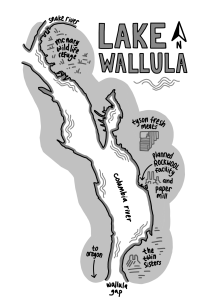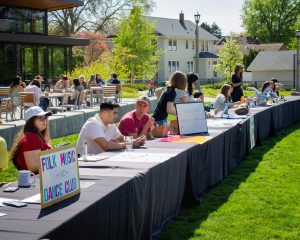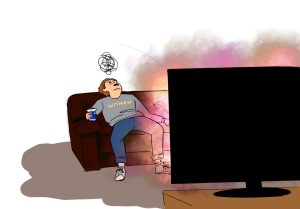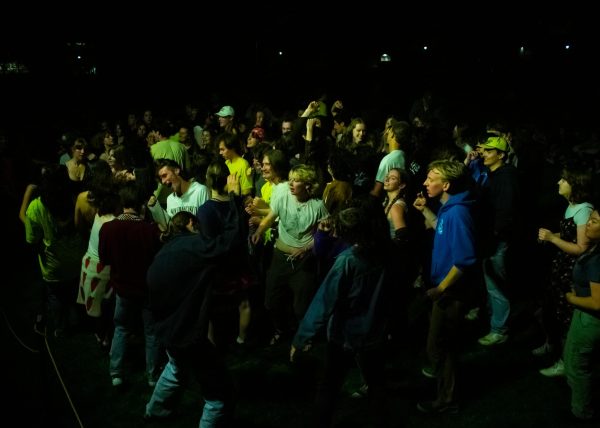A Woven Celebration: “The Nature of A Stitch”
December 7, 2018
Showing for its last week on campus, the Sheehan Gallery closes the fall semester with the textile exhibition, “The Nature of A Stitch.” The exhibit invites 46 artists, both local and international, from a wide array of professional backgrounds, to display and share their quilt work. United under the theme of the environment, the artwork celebrates traditional quilt-making methods as well as contemporary quilt-making technologies and methods.
The textile exhibition was proposed to Daniel Forbes, Director of the Sheehan Gallery, by local Walla Walla quilter and former member of SAQA (Studio Art Quilt Associates, Inc.), Sally McQuaid. Through careful consultation with McQuaid and Kynde Kiefel, Exhibitions and Collections Manager for the Sheehan Gallery, 46 pieces of artwork were chosen from a catalog to be brought to campus.
“The Nature of A Stitch” includes pieces that use different kinds of fabric such as silk, cloth and linen. There are also artists scanning objects and printing their own fabrics, even using sewing machinery where five needles of thread are sewn into a fabric simultaneously.
“There is within quilting, because of stitching, physical metaphors of connecting and binding things together. What’s interesting is that quilting as a material process is something that is used very effectively in multiple sort of art therapy situations because that physical act of stitching something up contains within it connotations of healing,” Forbes said.
Apart from Forbes personal interest in textile artwork, the tradition of stitching and weaving is one that is connected to our locality.
“In addition to meeting the needs of our community here at Whitman, the gallery is a center of art in the Walla Walla Valley as well. Because we are a more rural community, there is a very rich history of weaving and quilting that is connected with this valley,” said Forbes.
The gallery was curated in a way that the artwork is presented as a visual library. Viewing it as an extension of his own artistic practice, Forbes saw the collective artwork as an installation of its own. To create a natural flow between pieces and a more holistic visual experience, numbers are assigned to each artwork rather than placards. The pieces talk to each other, either thematically or in terms of color scheme.
Moreover, the theme of nature and the environment naturally manifested through the process of collecting the artwork and curating the show naturally appeared.
“It was total color therapy. Each one had a very healing feeling to it. And that was part of the conceit to honor nature with the textile show this fall, just feeling like both internally and externally we just had to have those images near us,” said Kiefel.
“A lot of the artists are responding to external environments. There is a conservation narrative in a lot of the quilts but a lot of the other artists are also reflecting on internal environments as well, such as things going on within the body,” said Forbes.
The theme is particularly relevant at a place like Whitman College where many are passionate about the environment.
“All the works are textile and quilting works, but they all have to do with our various relationships to the environment. So I think Whitman students would benefit from coming in and looking at them for that reason because it’s sort of an access point into people’s interests with environmentalism,” said Wallace Manning, a senior art major.
Apart from its pertinence to Whitman students, many members of the community have also paid visits to the gallery and left feeling artistically inspirited.
“That’s been a wonderful sentiment that I’ve heard over and over. People leaving and saying, ‘I want to learn how to make stuff, how to make that.’ And that’s what I hope, that you just see the elevated game of these particular artists and just want to do something,” said Kiefel.
“The Nature of A Stitch” intertwines the healing nature of textile production and concurrently tugs at our heartstrings with magnificent displays of our natural environment. Though this exhibition is only here till the end of the semester, echoes of these pieces will remain.








